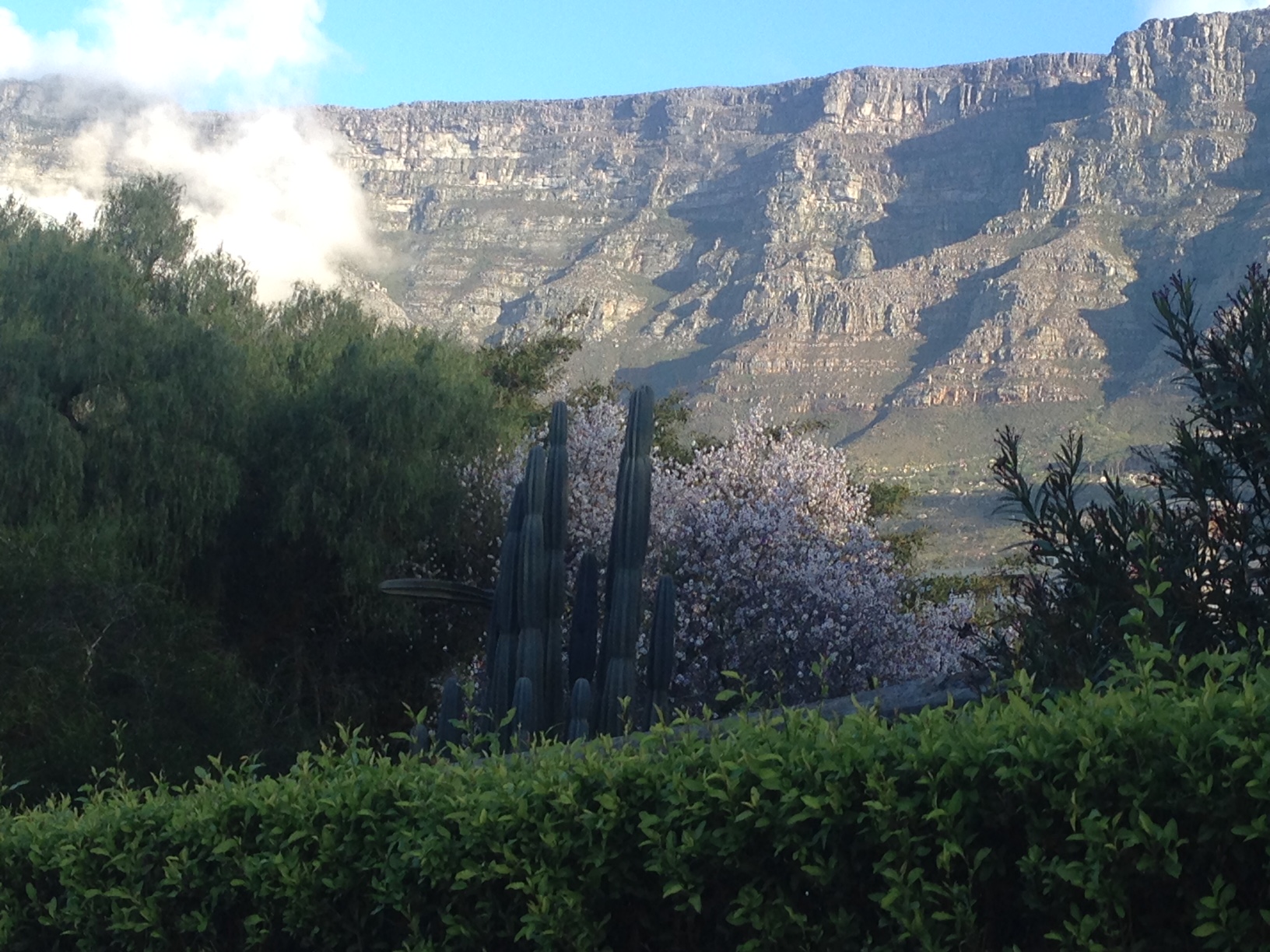I grew up in Durban, South Africa, where the year can be divided into two parts. There is a hot, rainy section, with the kind of humidity that makes the pages of books go all frilly and
where by February the vegetation is thriving in a slightly obscene way. You drive past a house with a fully grown tree thrusting itself out of the gutter and the word fecundity just starts sliding around in your mind. A sexy and disgusting time of year. After that comes the bit where it is dry and clean and clear, and just cold enough so that you can wear socks and a jumper for the whole day if you need. You can still swim in the sea every day though, and you can still admire how attractive everyone looks in the buttery winter light. That’s it though—parts one and two. Spring and autumn can find no purchase there.
I was elated when I moved to Cape Town and worked out that seasons exist in reality, rather than being invented for the purposes of atmospheric scene-setting in campus novels. Autumn: leaves genuinely turning orange, Egyptian geese screaming their heads off at the slightest inconvenience, and people walking around in coats that confer upon them a misleading air of kindness and intelligence. Spring: jasmine tumbling through the fences of the apartment buildings, and everyone lying to me and themselves when they say they are looking forward to summer. Winter: historically rainy, and if not cold then at least objectively chilly. Summer: a hot, windy, nightmare disaster.
Climate change has fucked all this up, of course. Walking to work yesterday I saw an almond blossom in full bloom in the garden of the Catholic Women’s Residence. It’s meant to be winter still. Last year, I pulled handfuls of jasmine through a garden fence in June. This is three months early. It was meant to rain today—August 1—but of course it is not raining, and on Friday it will be 22 degrees (72 in Fahrenheit). Traditionally, it would be 14 degrees.

There are still a few reliable ways to register the changing of what were once discrete seasons. Every November, the international models jet in for the start of the Cape Town season, and you realise that summer is imminent and also that models aren’t just taller and thinner than we are. They are better. Mid-April, you start seeing fund-raising parties for the steampunk enclosure someone wants to build at AfrikaBurn (the South African equivalent of Burning Man), and you realise it is autumn, and time to start making fun of AfrikaBurn again. June sees the American Legs come striding onto campus at the University of Cape Town, announcing to us all that winter is here.
The University of Cape Town has a student body of about 29,000, of which 4,500 are international students. These students come from all over the world, bringing many different types of legs with them. Legs from Japan, legs from India, legs from Zambia, legs from Rwanda and Canada and Ireland traversing the campus. Most of the time, these legs do not call any special attention to themselves. They do not have any noteworthy characteristics that announce the nationality of the person they are carrying around. The American Legs, however, betray their owners’ place of birth immediately. They are so strong. So healthy. So unbelievably shiny. How do they get their legs like that? How come the legs never get cold, and are content with a pair of small sporty shorts even in the dead of winter? What kind of razors are the women using? Better and more powerful razors than can currently be purchased within the borders of South Africa, certainly. Are these legs typical of all American students, or just the ones that come to UCT?
I have been studying the American Legs for years. It’s not just me who is unhealthily fascinated by them. I asked three friends who work on campus to describe the American Legs to me, and their answers display a remarkable sameness:
- “So shiny.”
- “Not a single hair on any of the women’s legs.”
- “Lots of moisturiser .”
- “They come in winter without any long pants.”
- “Legs all full of blood from walking.”
- “So strong.”
- “Ultimately indescribable, but definitely American.”
We do not have all the answers. What we can say for sure, though, is that there are less of them than there used to be. There are fewer visibly American Legs on campus this year, and I am quite sure that this is not because their owners found out you can buy long pants in the shops here. International student numbers are dwindling; the American Legs are evidently choosing to march in another direction.
It’s difficult to get information on why this is happening, exactly. If an international student declines an offer to spend a semester at UCT, or decides to retract her acceptance, she doesn’t have to say why she is making the decision. She just has to say she’s not coming anymore. It seems pretty obvious that the drought has something to do with it, though. The threat of Day Zero (the day when the municipal water supply would be turned off and Cape Town’s residents would have to queue for a daily ration of 25 liters) dominated international headlines earlier this year, and it’s easy to see how this might have factored into someone’s decision to take her American Legs elsewhere.
Jasmine in June, 22 degrees in August, and fewer and fewer American Legs. How will we ever know that winter has arrived?







